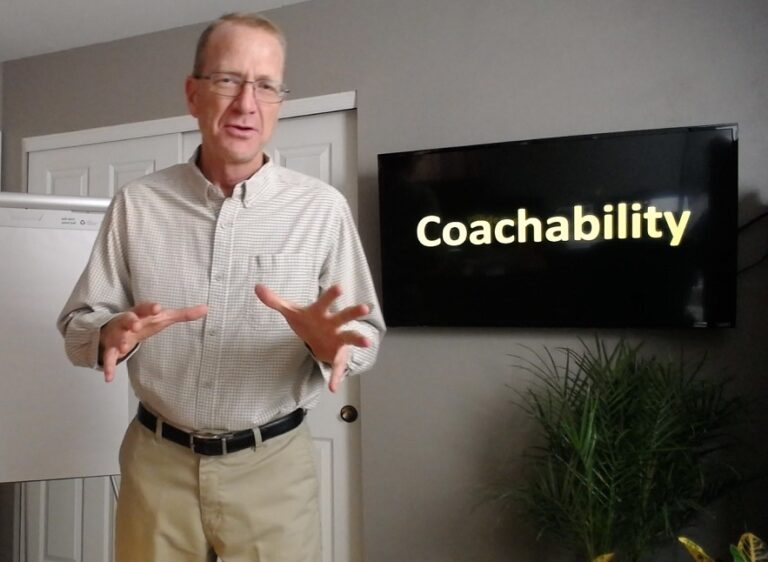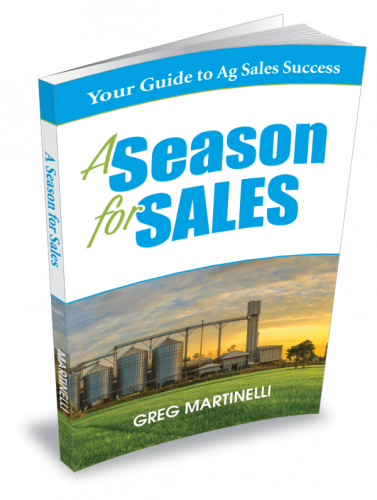Just how coachable are you?
As a sales trainer and a sales coach, I find Coachability to be one of the most important characteristics for long term success in sales. Good and bad times will come and go. Customers and prospects will come and go. Entire segments of your industry will come and go. However, the ability to engage the four behaviors listed below will enable you to remain effective at selling.
This message is a fit for all salespeople, but mostly written for the mid-career to the more experienced sales people on the team. The new salespeople are typically open to coaching as they begin their career. They are well aware that they don’t know everything. However, it’s in that mid-career (8-10 years) when we begin to think we have it all figured out. How could any manager, coach or outsider ever tell me how to sell when I have been here year after year doing it? If this is you, as it was me, then keep reading. This message is definitely written for you.
You are currently in one of the following modes in your territory: Increasing, on a Plateau, or Decreasing. If you are increasing, great. Read on to find out how you can increase faster and with the right customers. If you are on a plateau, read on to find out how you can escape the flat performance and ramp up for an increase. If you are decreasing, read on to find out how you can change your downward spiral before your manager has a “talk” with you.
- Continuous learning for continuous improvement: This is the number one component of coachability. The true Six Sigma of the sales world. You embrace Kaizen, the Japanese principle of steady and continuous improvement. The reason this skill is so important is because your market is continuously changing. Look around at the producers or agribusinesses you are selling to. If you have been there 10, 15, or 20 years, how have your customers changed? Are they bigger or smaller farms? Larger or smaller herd sizes? Are they using the same type of technology in producing their crops or livestock? How about your competitors? Same or different? How about your level of technical expertise needed? Same as 15 years ago or are you doing something completely different? My guess is that it has changed drastically over the years.
- Seek out feedback: Don’t sit back and wait for it. And not just your top customers. Seek feedback and cross reference anyone willing to answer your request. Some of the best ideas to improve your selling skills and your company’s products or services can come from anyone you interact with. Here are a few of the numerous examples of this happening. A customer’s accounting staff making several improvement recommendations to our billing. While we didn’t change our invoices to completely accommodate the accountant, we did change how the product was listed on the invoice. Another example happened when a salesperson at a dealership made a product recommendation to improve two key products in our lineup. This resulted in a better fit for the targeted customer and we were able to differentiate from our competition with those improvements.
- Persistence versus Stubbornness: This is an interesting dilemma for salespeople. Push too hard or too fast and we are “that pushy salesperson” or viewed as being “salesy”. Give up or not go back soon enough and the customer buys from someone else. What to do? First, I can tell you my observation from watching many in the agribusiness sales profession. We err too much on the soft selling side of this dilemma. We are too afraid of upsetting a customer. So, we don’t go back soon enough. Another component of persistence is deciding too soon that a customer is not interested. Too often, I have had the experience of selling someone who I thought would never buy from me. I made one last call on them or ran into them at an event and just like that, they bought from me. No, this doesn’t happen with every cold prospect, but too often we give up on the appearance they won’t buy. Seek out the advice of your coach on how persistent you need to be. Weigh in the value that prospect would bring to your territory. This will tell you how persistent you need to be.
- Failure is a step: Another key component of coachability is to understand that failures and set backs are part of progress; a step on the road to success. You are in a mature industry with plenty of competition. Customers are selling at or below breakeven. This will generate a lot of price discovery for products and services. That means customers are more likely to challenge the status quo of who they buy from. This might lead to failures or setbacks in your sales. The Uncoachable salesperson might look at the failures as a way to just keep doing it the old way. They might say, “See, I told you this product wouldn’t sell”. Our Uncoachable salesperson will apply this reasoning to any new product, service or change they don’t like. It might be the new pricing strategy, the new CRM program, changes in delivery, or anything they might get customer complaints on.
I’m not saying you have to embrace every change that comes down the line. That would be disingenuous and harmful to not provide your expert feedback. I’m also not saying you should look at failure as a positive event. However, I am saying that your road to selling success will include some moments of “not-so-great-results”. Learn from them. In a previous post titled, “Learn from Losses and Losers”, I wrote of one very powerful technique to learn from losses. All of us have that moment when a customer tells us they are going to buy from our competition. “Sorry, we decided to go with a different company than yours”. Those words can drill into your head as you reel with disappointment. Train yourself to pause, hold off that disappointment for just a bit, and ask a follow up question like this. “Well, obviously not happy that you are, but I understand. Hey, not trying to change your mind at all, but can I ask you a quick question. What was it about that other company that made you choose them? As you looked at our offer and theirs, what would you recommend I change in the future to help me be the better choice?” You may get absolutely no useful information with that question. However, frequently, you get a wealth of information on how to sell better.
In closing, I’d like to ask you a series of questions on your coachability. Think about the answers to these questions as you drive to the next farm or agribusiness you are calling on.
- How coachable are you?
- How do you react to change?
- How often do you accept a new product, service or change from your company?
- How do you react to feedback?
- How often do you seek out feedback?
- Are you stubborn or persistent? My definition: Stubborn means you are stuck in your ways whether they work or don’t. Persistence is continuously striving for success, even in the face of difficulty.
- How do you react to failure or setbacks?
- In the last 90 days, how many failures or setbacks did you experience? How many stopped you from moving forward on that customer/project?
After considering your answers to these questions, I recommend you discuss them with your spouse, your manager or a few close co-workers to get their opinion of your answers. If they are willing to open up and share their opinions, thank them for this gift.


